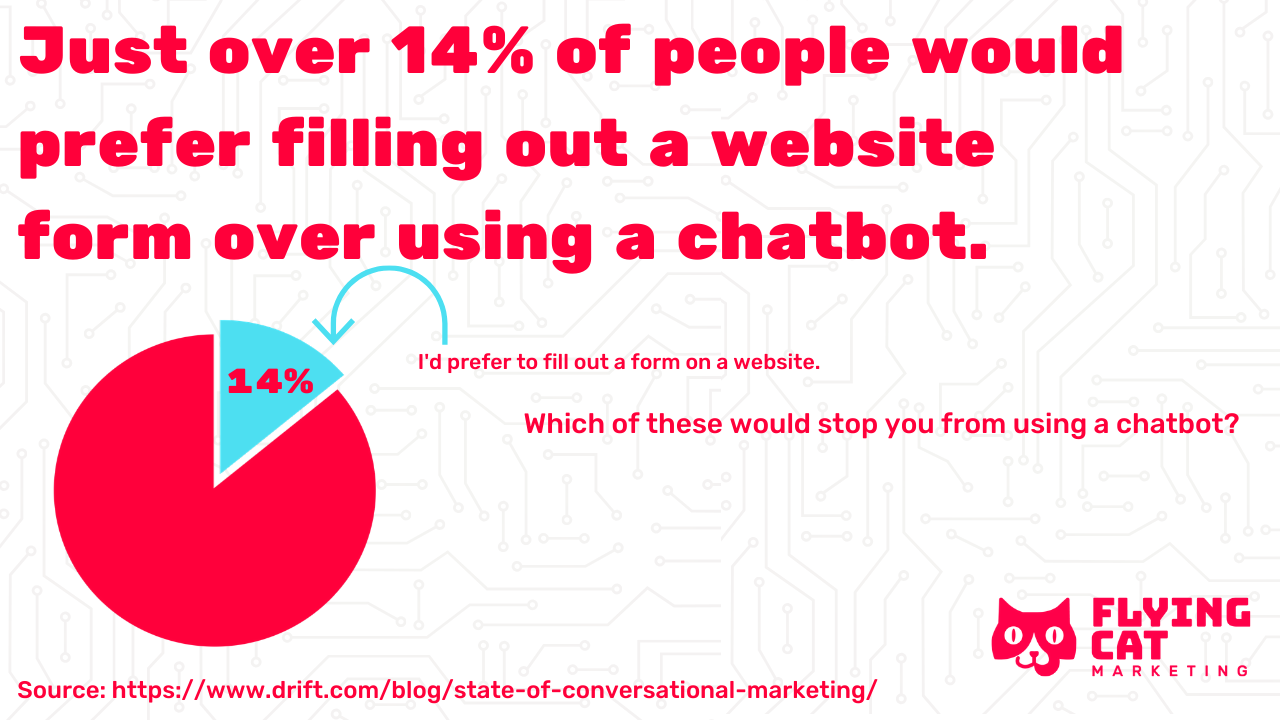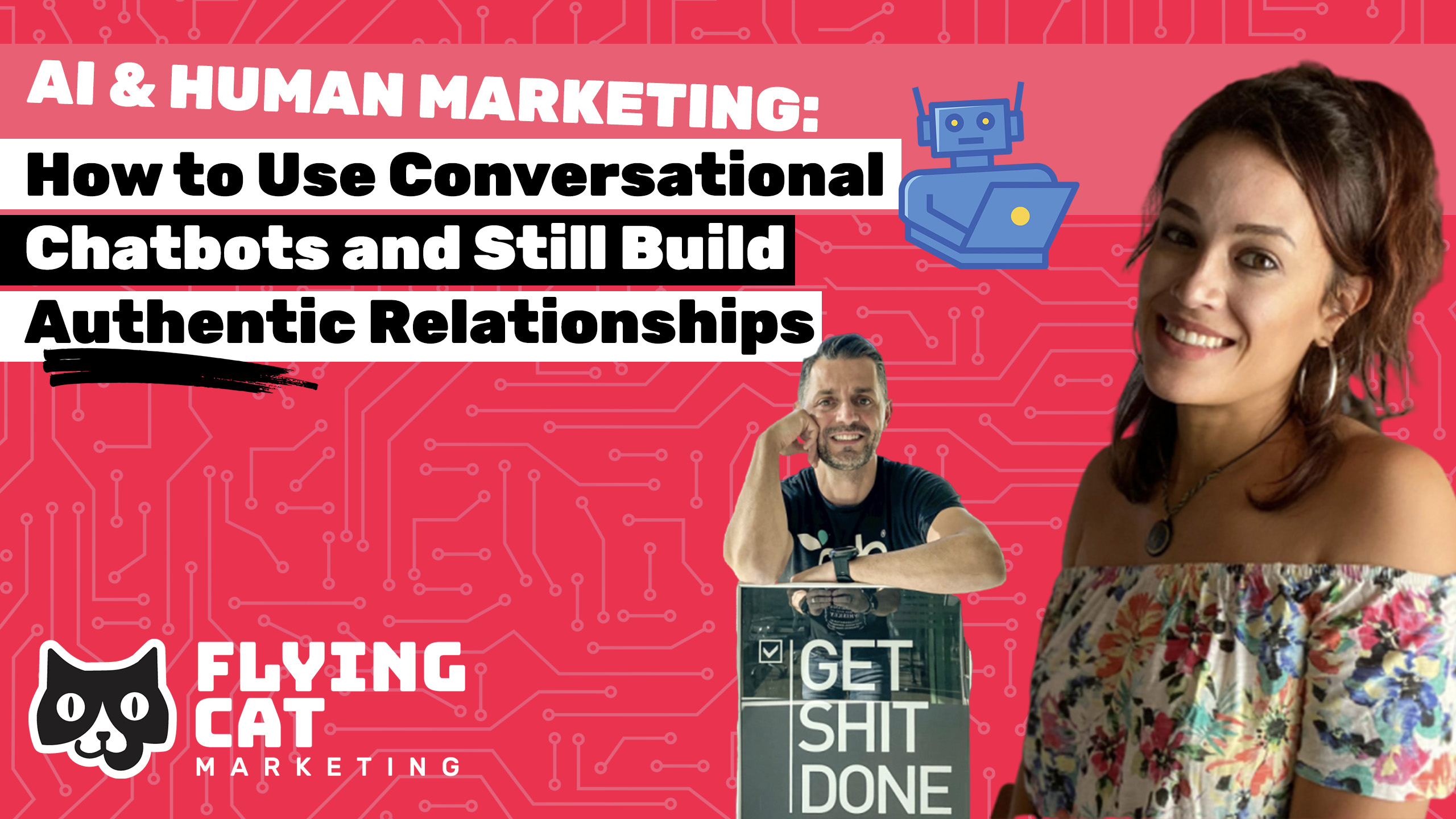Chatbots don’t always scream “there’s a real human behind this!”.
But the conversational revolution is here to stay, and it’s time for startup founders to embrace AI. Luckily, they don’t need to forgo authentic human relationships to do so.
Inbound marketing revolutionized the way we interact with customers – putting them at the center of our work.
But things have changed since Brian Halligan coined the term in 2005. Fifteen years later, inbound marketing has created buyers that are deeply informed and want more than information – they want connection, and they want it quick.
Inbound marketing is about converting strangers into brand ambassadors using content marketing, SEO and social media.
Convergent marketing, coined by Max Brigada of AdaOnCloud, is the natural evolution of inbound. It adds that instantaneous touch – conversational AI – to achieve the same objective: turn strangers into loyal customers.
How Is Convergent Marketing Different From Inbound Marketing?
Convergent marketing is technically a form of inbound, but it’s a little more specific. While inbound can be anything from PPC to email marketing, convergent marketing is the unique combination of mobile, social media and AI to form relationships with customers.
The starting point is always social media, not a blog or landing page.
Convergent marketing takes shape in the following steps:
Creating a buyer’s persona
Whether it’s inbound marketing, sales, product design or convergent marketing, you need to understand who you’re serving.
The main two questions are:
- Who?
Who is your best customer? Not just their company, but the person you’re dealing with. Not just their job title and LinkedIn page, either. What are their emotional triggers at work?
- Why?
Why your product? What do you offer them that solves the problems you identified? Be honest: why would they want to spend money on your product?
Creating Content
It becomes a lot easier to know what content to create after you’ve defined your persona’s pain points. There’s a lot less guessing and a lot more “aha!”.
Content, for our purposes, isn’t about promoting your brand and talking about your product. It’s about helping and educating your prospects in the form of:
- Blog posts
- White papers
- Slide shares
- Infographics
- Videos
- Podcasts
Convergent marketing means this content is all focused on social media posts, so out of the above pieces of content, you’d do infographics, videos, slides or text posts.
Lead Generation
Lead generation – better defined by Max as “how the hell you get leads to come in.”
You may think that being B2B means you don’t need to be on social media, but that’s simply not true.
First of all, LinkedIn is social media – B2B needs to be there. Second, having a multi-channel presence online with relevant and useful content shows that you’re a serious business.
One that’s modern and is with the times.
Lead Analysis
Lead analysis is the process of measuring how interested the lead is in buying your product.
You score the leads based on how they interact with you, or demographics, or whatever element you choose that makes them more likely to convert. Then you deal with the ones that will close the quickest.
Lead Nurturing
I didn’t take you through this process that you probably already know for no reason. I wanted to show you where AI chatbots come into play.
This is where marketing automation and AI-powered conversational flow comes into play.
Data says Millennials prefer chat as a form of communication with brands. It’s just faster than forms or email. According to emarketer, 63% of consumers reported that they are more likely to return to a website that offers live chat.

It’s Not B2B Or B2C Anymore—Its Human To Human
Is there a big difference between B2C and B2B? It turns out, not much anymore. All of it is Human to Human. Doesn’t matter if you’re an enterprise software or a relationship coach.
The global shift to H2H marketing is both what makes us need chatbots and what can make us nervous about them.
For one, the humans we’re marketing to have short attention spans, are very well informed, and they want answers fast. A chatbot can shorten the time they wait for answers.
On the other hand, chatbots just aren’t human. What about the first H in H2H?
The thing is that chatbots aren’t meant to replace humans.
They’re only there to provide for answers and nurture leads while the human can’t get to them straight away.
They’re there for fixing the leaks in the sales funnel.
Consumers And Marketing Rules Have Changed
Your potential customer is another time zone. They may be surfing the net while you’re sleeping.
That’s the thing. Chatbots never sleep. They can answer questions quickly.
They help get the initial conversation started. So when you get to your office the next day, you can take over the conversation.
Choosing the right chatbot for your business
A chatbot is a machine you can train.
Some of them take months of investment. The more complex your business, the longer it takes to train.
You don’t need to be a coder for most of them. Companies like AdaOnCloud and Drift offer user-friendly chatbots. But the reason it takes so long to train is that you can’t anticipate all the questions you’ll get from website visitors.
As you get more input and data in, you provide the chatbot with the answers.
A chatbot is not an answering machine, so one should not expect it to work as an answering machine. Nor is it a replacement for human intervention.
AdaOnCloud offers chatbots that work on semantic analysis. A functional chatbot needs a lot of love, a lot of data, and a lot of work as well. It needs feedback and training to understand conversations and respond to them.
A chatbot slowly feeds upon the data that visitors put into it. It then needs to be trained on how to respond to those queries. With time and effort, it becomes more efficient for different use-cases and in different conversations.
Chatbots Are Really Easy To Install
Chatbots are very handy and can be trained by anyone. You don’t have to be tech-savvy to train a chatbot. One of the unique selling points of the chatbots is that they are easy to train.
The ease of using chatbots is what makes convergent marketing unique and faster.
AI Will Supplement, Not Replace Human Jobs And Marketing
Will AI and machines will replace many human jobs?
No!
They’re only to add an extra touchpoint with your customers. Just like your content does. Except they add them in real-time.
However, they will only supplement human jobs. AI and machines will only replace repetitive jobs.
AI can never match humans at doing tasks that involve core human abilities like imagination and creativity and, of course, connection.
